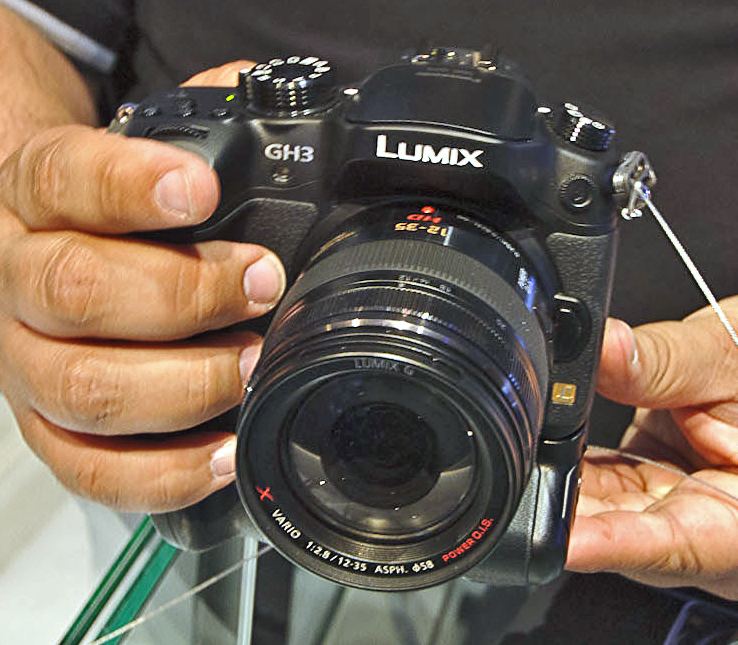Storage SD, SDHC, SDXC | ||
 | ||
Type Micro Four Thirds System Lens Micro Four Thirds System mount Maximum resolution 4608 x 3456 (15.93 megapixels) ASA/ISO range ISO 200–12800, extendable to 125-25600 | ||
The Panasonic Lumix DMC-GH3 is a digital mirrorless interchangeable lens camera (MILC) manufactured by Panasonic. It is the successor to the Panasonic Lumix DMC-GH2 and was announced in September 2012 at photokina. It was available from November 2012. It is the first MILC that can record videos with a bit rate of up to 72 megabits per second. That is significantly higher than the specification of AVCHD 2.0 of up to 28 megabits per second, which was released in July 2011 and is used for similar cameras and camcorders.
Contents
The successor of Panasonic GH3 is Panasonic GH4 with capability to take 4K video, with MSRP about $1,700, but the optional external video/audio unit, the Lumix DMW-YAGH, costs $2,000.
Technical specification
The camera body is made of a magnesium alloy and has a swivelable touch screen, an electronic viewfinder with diopter correction, an internal flash light and a hot shoe. Due to the short flange focal distance of about 20 millimeters for the Micro Four Thirds system, almost all lenses with an appropriate image circle can be mounted to the body with a lens adapter. The normal focal length is at about 25 millimetres.
In all still and movie modes as well as with the monitor or the electronic viewfinder, the GH3 works in live view mode. It can be operated in manual focus mode with software magnification or with a versatile contrast-detection auto focus system, including face detection and object tracking. This applies to steady shots as well as to movie takes. Due to the optional electronic shutter the camera can take images without any acoustic noise.
The camera body has a lithium-ion battery, and an addition battery grip can be attached, which has a release button for portrait shooting, along with other control elements.
The GH3 has an internal stereo microphone and a socket for external microphones.
WiFi
With a WiFi connection the camera can communicate with smartphones, tablet computers or mobile and stationary computers. These devices allow remote control as well as live view. Furthermore, they can get the geo coordinates of the recording location and add these to the metadata of the recordings. The current Lumix link App does have limitations when recording in video, namely you can start the video recording but NOT stop it by smart phone or tablet.
The images can be transferred to compatible television sets.
Use for movie production
The ability to take videos in Full HD resolution with up to 60 complete frames per second with a bit rate of up to 72 Megabits per second with powerful lenses and the capacity to use external microphones make the GH3 interesting also for high-end movie production. The videos can be also taken in time lapse photography or in slow motion and can be flagged by SMPTE time code.
Properties
Compared to its predecessor Panasonic Lumix DMC-GH2 the GH3 has the following main differences:
